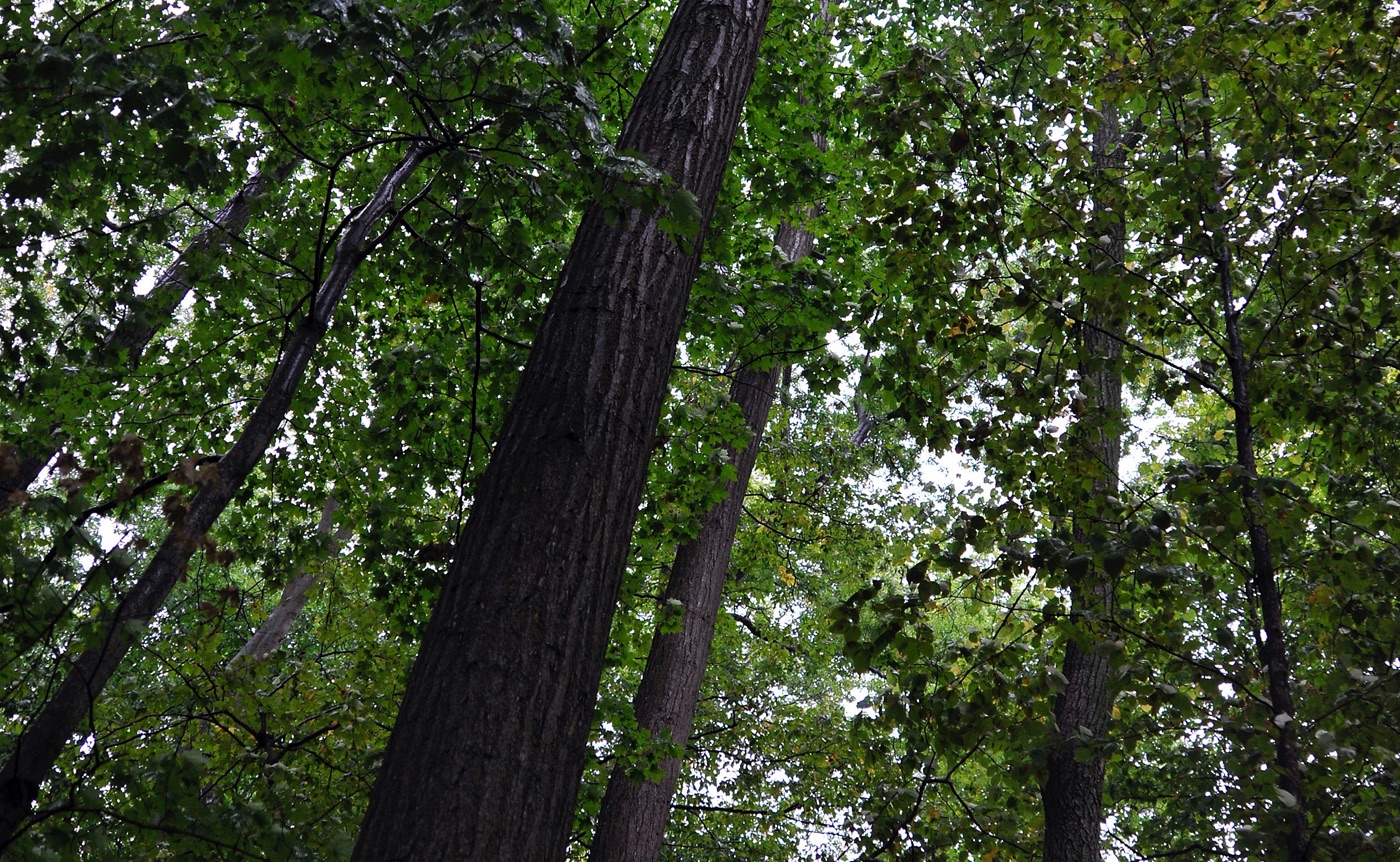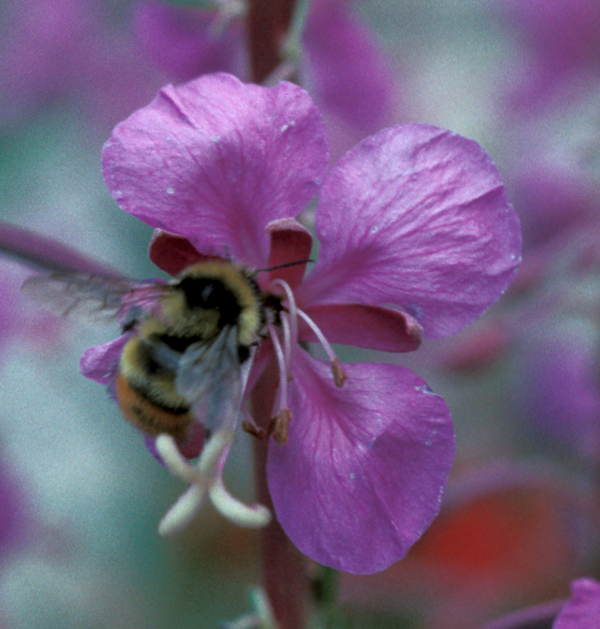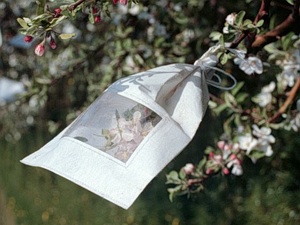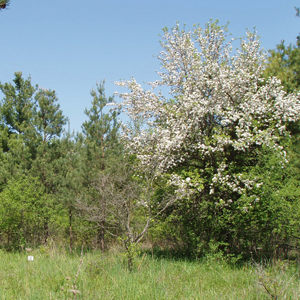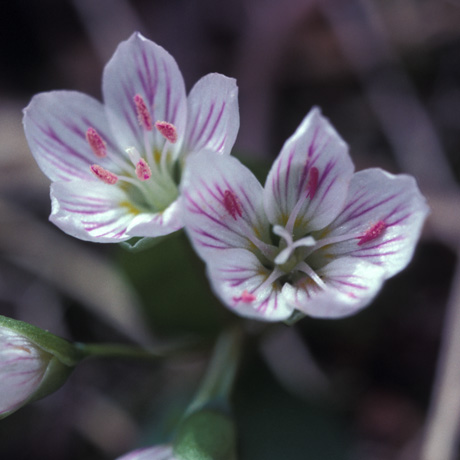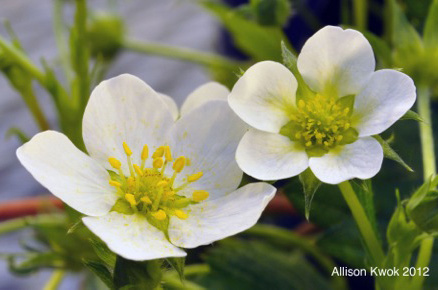Diversity of plant reproductive systems
Function of complex reproductive systems in Malus, the apple genus
Plants exhibit many different mechanisms for reproducing, ranging from clonal growth to asexual dispersal propagules, from asexual seed to sexual seed, and from self-fertilization, to cross-fertilization and everything inbetween. Some species contain many of these alternative reproductive strategies within the same species but they are notoriously difficult to study. We have been examining these complex reproductive systems in the genus Malus, the apple genus. Initially, we studied paternity and patterns of pollination within and among cultivars of apples. Our goal was to improve orchard design and apple yield through a better understanding of pollen movement, fertilization patterns and genetic compatibility between cultivars. More recently, our attention has turned to a native species of Malus, sweet crabapple, because of its complex reproductive system and the potential for hybridization from domestic apples. This work has been conducted largely by Paul Kron, a Research Associate in the lab. Working with a new M.Sc. student, Dane Cronin, we are also turning our attention to the identity and reasons for success of naturalized domestic apples which have established populations outside of cultivation
Researchers: Dane Cronin (M.Sc. candidate), Paul Kron (Research Assoc.), Matthew Routley (Ph. D.)
Mating Sytem Evolution
Plant mating systems range from completely self-fertilizing to obligately outcrossing. Understanding the population, genetic and adaptive mechanisms leading to evolutionary shifts in mating system have been a longstanding focus of our lab. Dr. Husband's Ph.D. concerned the role of genetic drift in the evolution of selfing-fertilization, and his postdoctoral studies focused on the magnitude and genetic basis of inbreeding depression, an important selective force opposing self-fertilization. More recently, the lab has studied how traits such as inflorescence size and dichogamy can regulate the degree of selfing in a plant, and have examined the influence of genome multiplication on inbreeding depression and the evolutionary dynamics of mating systems.
Researchers: Matt Routley (Ph.D.), Barbara Ozimec (M.Sc.)
Protandry and floral evolution
Many species of hermaphroditic organisms avoid self-fertilization by separating the timing of maturation of male and female organs on the same individual. Referred to as dichogamy, male organs may develop before (protandry) and or after (protogyny) female organs. Through the work of former Ph.D. student, Matthew Routley, our lab has examined the functional significance of protandy in terms of not only self-fertilization but also on interference between male and female function on the same plant and success of pollen dispersal and siring success on other plants.
Researchers: Matthew Routley (Ph.D.)
Polyploidy and the evolution of gender dimorphism
The evolutionary transition from hermaphroditism (combined sexes) to dioecy (separate sexes) is associated with whole genome duplication (polyploidy) in several flowering plant genera; however, our understanding of the mechanisms underlying these patterns is minimal. In collaboration with researchers such as T.-L. Ashman, J. Miller and J. Kohn, we have been exploring the plausible alternate pathways by which this association arises. In addition, using native, diploid species of strawberry (Fragaria) and tetraploids synthesized from them, our lab has been examining the direct and indirect effects of polyploidy on expression of gender (production of male and female sexual organs and gametes).
Researcher: Allison Kwok (M.Sc.)
Hybridization between introduced and native species
Hybridization between related species is increasingly likely in a landscape modified by humans, and can have important implications for conservation of species at risk and regulating the ecological impacts of agriculture. Our lab has been involved in a number of projects that evaluate the potential and realized risks of hybridization between introduced species (including crops) and their native relatives. Past work on the endangered Red Mulberry, conducted by Dr. Kevin Burgess, and current work on American Chestnut and apple species are examples where hybridization may have important ecological implications.
More about:
Researchers: Kevin Burgess (Ph.D.), Stephen Van Drunen (UG), Mason Stothart (UG), Alyson Van Natto (UG), Dane Cronin (M.Sc. candidate), Paul Kron (Research Assoc.), Aron Fazekas (Collaborator)
